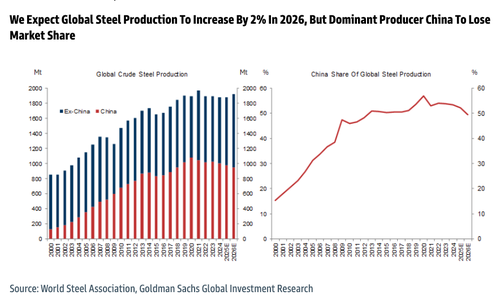Developed economies across the world are experiencing unprecedented levels of high inflation. The frontline defences against this inflation are their respective central banks, which seem to be fighting a losing battle. That they acted too late is a charge against them. They should have tightened interest rates much earlier and been less complacent about early signs of inflation, which they ignored as simply transitory. America’s former Secretary of the Treasury Larry Summers has been particularly harsh, saying the current tightening measures are too little and too late. It’s a bit ironic, though. Recall that it was Summers himself who had advised restraint on the US Federal Reserve’s part back in 2015 and was against raising rates prematurely. He had famously said, “Raise rates only when the whites of inflation’s eyes are visible.”
The present situation is quite the opposite. Inflation is soaring, it’s four to five times its target rate in many countries, and all major central banks are tightening as if in unison. What caused this burst of inflation all over the world? The Ukraine War and consequent disruption of supplies of foodgrain and fuel was a big contributory factor. But we are also witnessing wages going up and worker shortages. Those are not simply temporary supply shocks. In a recent article, economist Ricardo Reis of the Centre for Economic Policy Research describes four different factors that have contributed to recent high inflation, and also why central banks seem unable to contain it. These factors, according to him, are (paraphrased) incorrectly reading the supply shocks (including the whiplash effect in supply chains), ignoring the entrenchment of high inflation expectations, overconfidence of central banks and their “earned” credibility, and lastly, perhaps a higher tolerance for inflation itself.
You might also like
Mission Prarambh: What it means when India Inc rides a rocket
Beware, options guru’s spiel is subject to market risk
Why Apollo Hospitals needs a booster dose
For Indian Hotels Co, glass is half-full
Of these, the second factor is of particular interest. The entrenching of inflationary expectations. How do expectations get formed? How does a central bank know what the public at large expects inflation to be in the near or far future? Imagine if everyone believes prices are going up, and hence workers start demanding higher wages, and producers start marking up output prices. When such signs become visible, it can reinforce the belief that prices are indeed going up. This is how self-fulfilling prophecies work. But there is enough noise in the system and also competitive forces that keep prices capped. Central banks then rely on household surveys and sophisticated econometric analysis of those survey results. For a rather long time, it looked as if American expectations were “anchored” around 2% annual inflation. In India too, the Reserve Bank of India (RBI) conducts regular surveys to gauge inflation expectations. Monetary policy has to be guided by these expectations, and it is also the role of policy to ensure that such expectations get anchored around the target. India’s target has been 4% in 2-6% band.
All of this may sound like a psychological game, and indeed there are game-theory aspects to monetary policy. Surveys usually reveal a median inflation rate, with all responses spread uniformly around it. So, policymakers can safely assume that the median (or mean) is where the ‘anchoring’ happens. But Reis contends that this distribution started becoming skewed, and there was an increasing proportion of people (at its tail end) who were expecting high inflation. Add to this noisy mix the impact of supply shocks. We cannot also ignore the cumulative impact of money supply growth for the past 14 years. Much of that went not into economic or productivity growth, but asset markets such as for stocks and housing. Consumer inflation remained muted, although there were some danger signals in 2015 (remember Summers’ caution against raising rates?).
The pandemic, lockdowns, subsequent supply disruptions and Ukraine War have all been major shocks, and have caused inflation expectations to perhaps move to a higher anchor. The last time something like this happened was after the first oil price shock of early 70s. It led to a new paradigm of macroeconomics and introduced a term called ‘stagflation’ into the mainstream. It also was the beginning of extreme and extended tightening, which took several years to bring down the inflation expectation anchor. What was the sacrifice in terms of GDP, job loses and recessions that were induced? Developed economies enjoyed more than two decades of disinflation and stable prices. This was also a period of widening wealth inequality (thanks to surging stock and home prices), and labour’s relative loss of income share vis-à-vis capital.
That period has now ended, and we may be in a prolonged phase of higher inflation, and a swing toward a greater labour share of national income. Higher inflation benefits borrowers, erodes public debt and supports bigger fiscal deficits. Diehard monetarists will never believe that you can fight inflation by spending more money. But that is exactly what US lawmakers have done by passing the Inflation Reduction Act, which aims to spend $700 billion. Will this reduce inflationary expectations? Don’t hold your breath.
Unlike developed economies, India’s currently high inflation is above target, but not that much. But our expectations anchor is another matter. RBI surveys routinely reveal expectations to be in double digits. Reducing it to 6% or even 8% has been a near impossible task. So long as these expectations don’t harden further, RBI should be satisfied.
Ajit Ranade is a Pune-based economist.
Elsewhere in Mint
In Opinion, Himanshu warns against deceptively low inflation prints. Can e-commerce and MSMEs co-exist? Manoj Pant & Sugandha Huria answer. Sarah Green Carmichael says the message of #MeToo is yet to fully sink in. Long Story reveals the privacy risk posed by a booming KYC industry.
Download The Mint News App to get Daily Market Updates.
More
Less















